On the southern tip of Croatia’s Istria, you will find a lion missing his feet. The lion continues to watch over Pula’s Roman Amphitheater. And like that lion, I entered this part of Croatia without my feet. A bad hospitality experience left me immobile and yet courageous at the same time. I wanted to leave, however the lion within this redhead knew I couldn’t fault a place just because of one person. To let them ruin it for me would be more cowardly than courageous.
Pula is home to some of the best Roman ruins in Europe. As the wind whipped me into a dizzying dance, I entered the town’s Roman Amphitheater. With the outer wall of the arena almost completely intact, it is difficult not to be impressed by such a structure. Emperor Augustus ordered out the construction of the amphitheater in 2 B.C. but it wasn’t until 14 A.D. that the masterpiece came completely to fruition.
Pula’s arena invites visitors to head beneath its main structure, where gladiator contests took place to crowds up to 20,000 people. Entering the curved hallway has a certain chill to it that can’t just be explained on the weather. Many lives probably last saw theirs in this space, fraught with either a bundle of nerves or simple courage.
The heart shaped Istria measures 3,600 square kilometers, just south of Trieste, Italy. Jutting out into the Adriatic, Istria is known for its ability to captivate those on holiday. The tourist stands however are abandoned and quiet now as I head into Rovinj for the night.
Immediately I am overwhelmed by this Venetian looking city. The tower to St. Euphemia Church marks the town’s highest point. Supposedly the saint’s sarcophagus mysteriously washed up on the shores of Rovinj after disappearing from Constantinople. Rovinj welcomed the saint as its patron. For me finding a warm welcome in Rovinj was a challenge I did not expect. I started to think you must need to be a saint to be warmly received here, but my second accommodations in the city changed my tune.
Waking up in Rovinj, I resolved to at least give her my morning by exploring the old town area. The entrance to the old town features the Balbi Arch. From the 17th century, the arch is the sight of where one of the town’s seven gates once stood. A Turk’s head can be found on one side and a Venetian’s in the other.
I take the uphill battle before me of exploring Rovinj’s steep pedestrian streets. The only others to join me in the meandering are lone bicycles left behind by their owners. While one of the most visited sites in Istria, you wouldn’t know it in the dead of winter. The roll of my suitcase tumbles throughout the maze of streets, no doubt waking up the people of Rovinj.
That tumbling rolling suitcase sound always reminds me of leaving. I left behind my hard feelings for Rovinj. Like a lion without feet, I may have been a little cut down here, but I didn’t lose my roar. The boats bob as the waters remind me of their summer hue. I’m a long way from home, summer and faith in hospitality but there is always that glistening hope telling me the opposite.
Have you been to Istria?


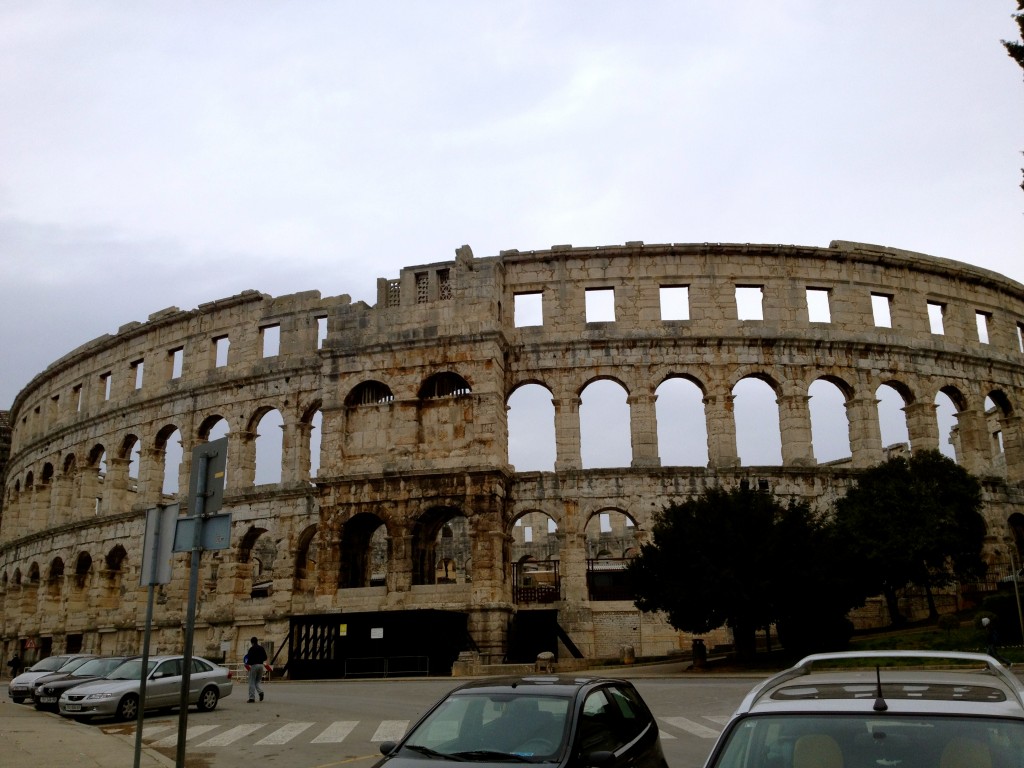
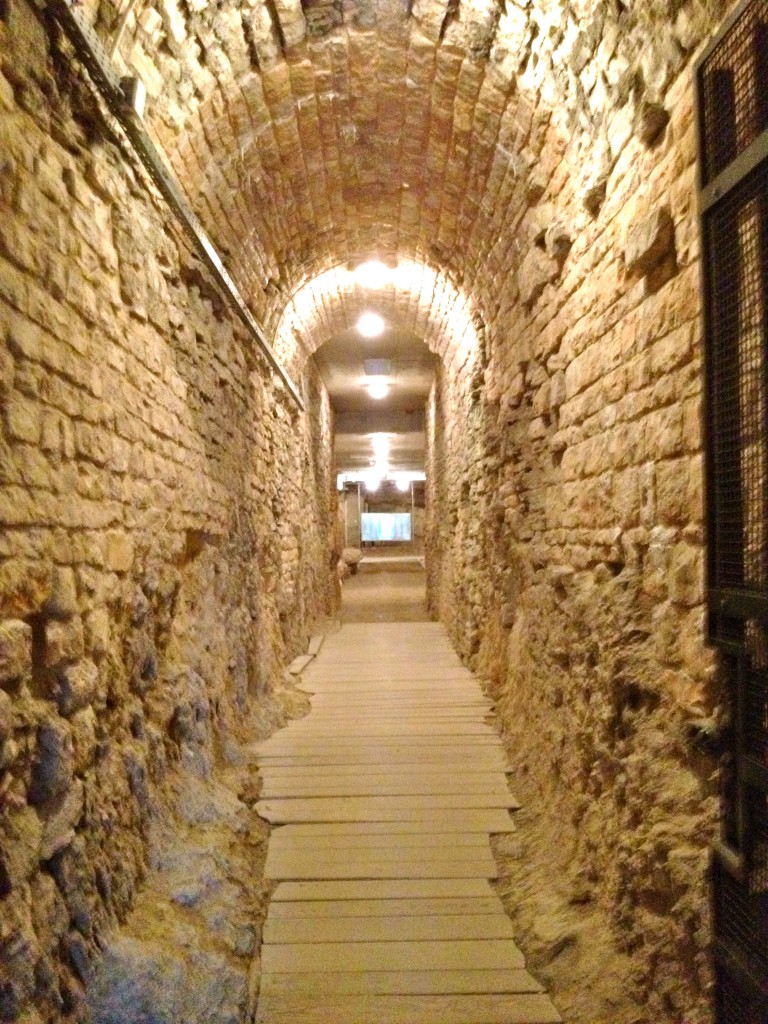
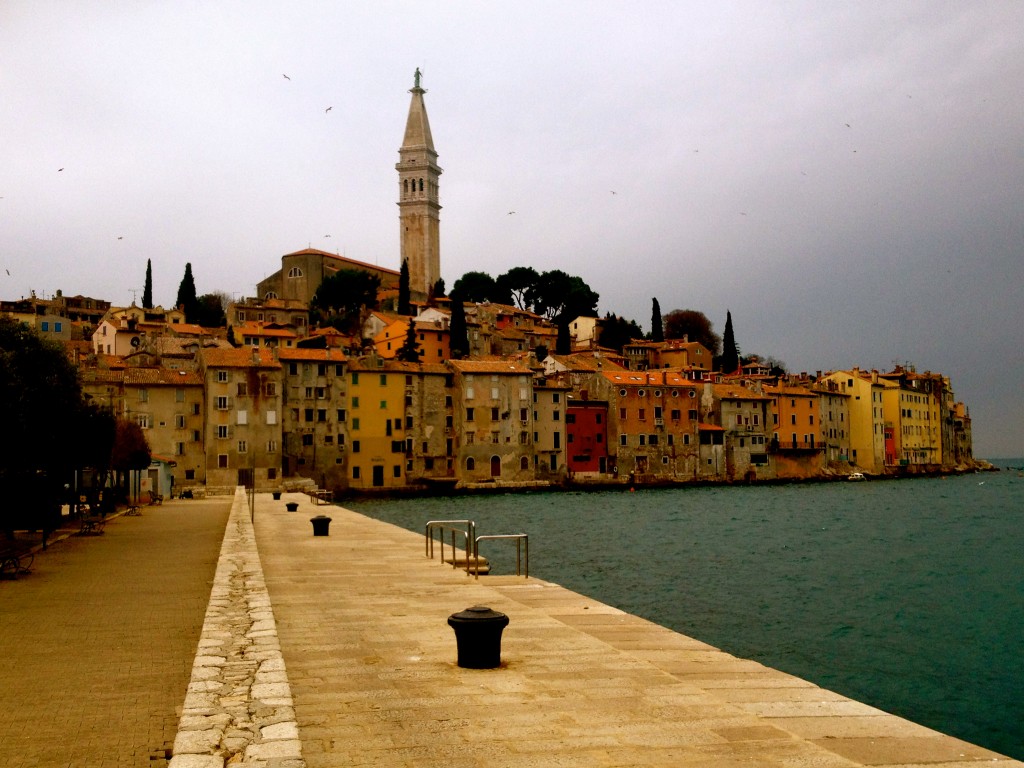
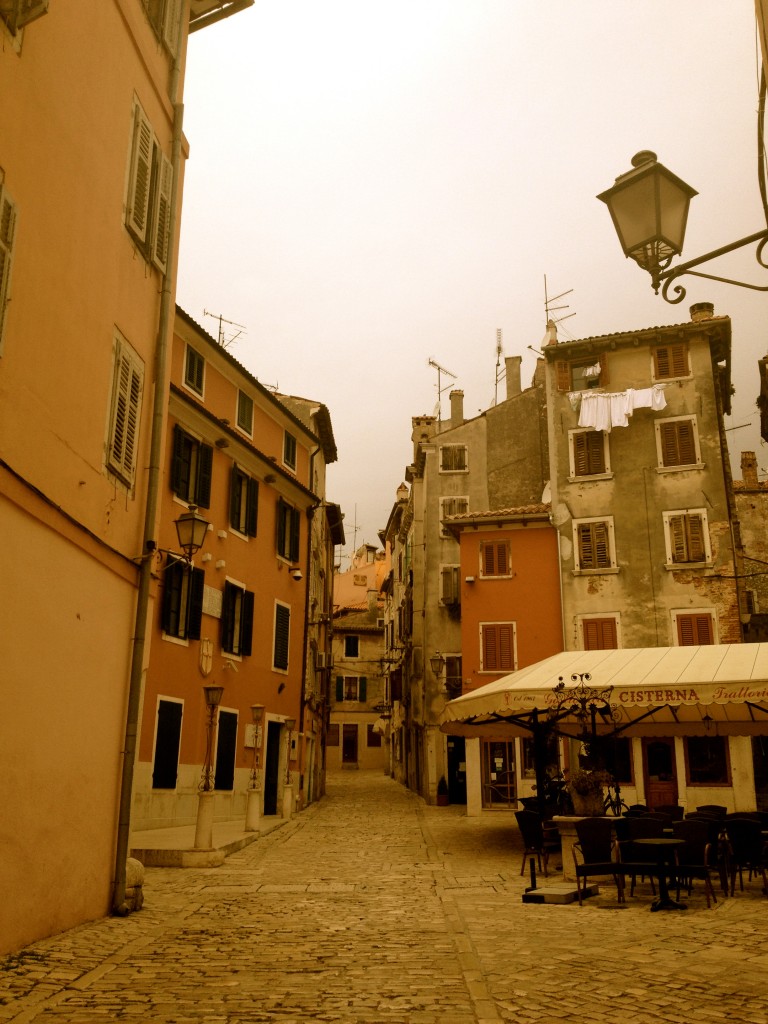
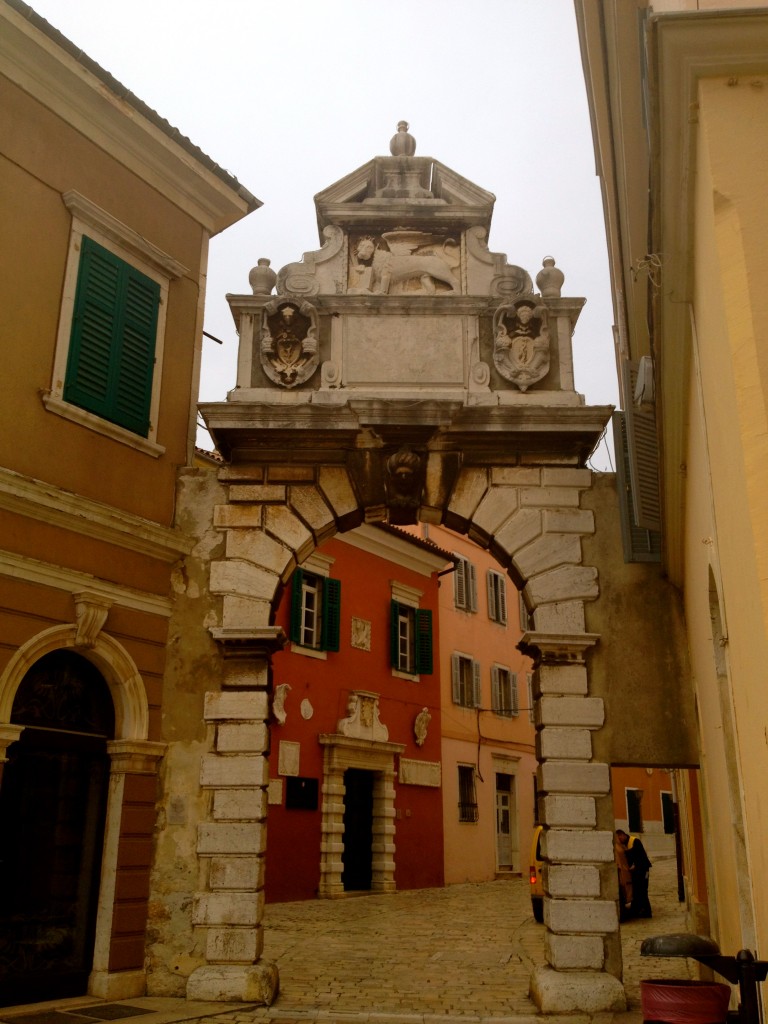
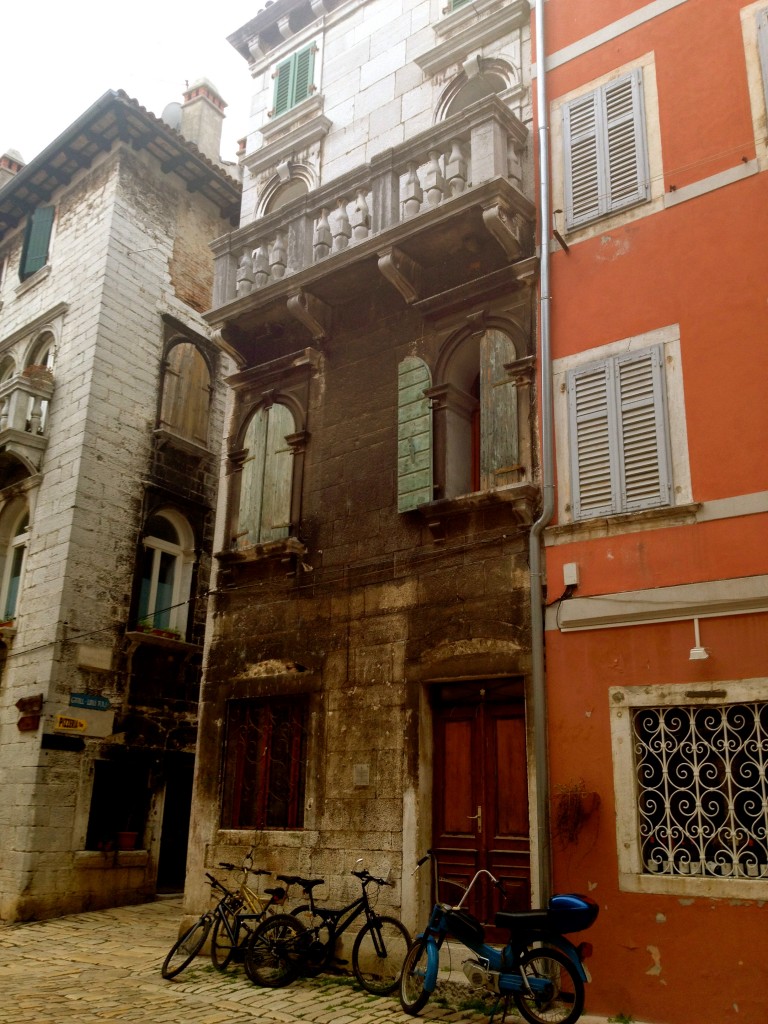
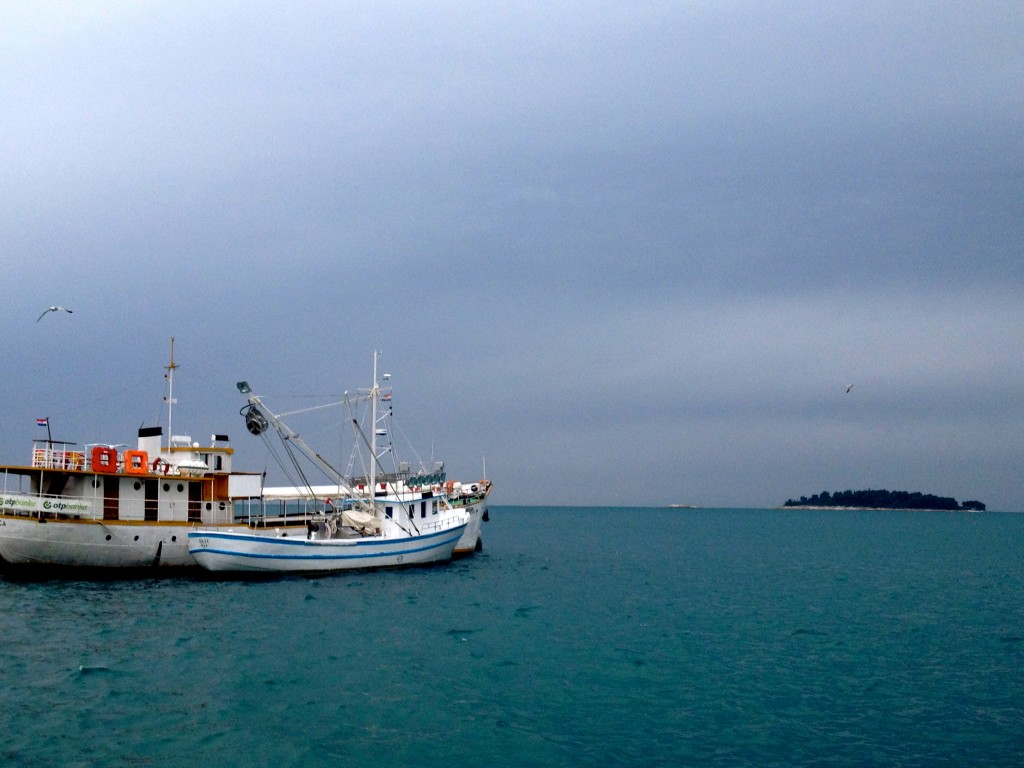
Beautiful! Everyone I know that has been to Croatia has really loved it. I would love to go eventually!
I like that random arch joining the two buildings. Looks like a great place for quirky architecture.
Wonderful photos and I love the lion analogy at the beginning. I’m always amazed that there are these other coliseums left over from the Roman era still standing yet all we ever hear about is the one in Rome. Thanks for teaching me about another one!
Nice! Beautiful, informative post and photos! I unfortunately didn’t make it down to Istria when I was in Croatia, but would love to go back!
What a beautiful place! I loved my time in Croatia and would love to explore more of the country.
Liked Rovinj a lot. If you enjoyed Rovinj, it’s worthwhile to continue up the coast to Piran.
My mom’s family comes from Trieste and Slovenia, and I have cousins in Capo d’Istria. You not only need to go to Piran, Izola, and Porto Roz, but you need to continue on to Trieste. Thankfully La Bora has stopped blowing in Trieste.
Take the time to visit Castello di Miramare in Trieste; you won’t regret it. If you want to visit the only concentration camp with furnaces in Italy, sadly the Risiera in Trieste holds that dubious honor. Even walking in the area gives me the chills every time…even when I didn’t know what was there.
Trieste is also a coffee city…you know Illy Caffe’? That’s them. They also are the home of STOCK liqueurs. If you like pens, visit Smolars. 🙂 I like to get student-grade fountain pens there when I visit–they had Waterman student pens once!
Thank you for the photos of my home-away-from-home nella regione dalla mia famiglia!
Ciao!
I loved both Rovinj and Pula, especially Rovinj. I went there with my best friend back in 1997 as we were leaving Europe to move back to the U.S. Rovinj’s streets are beautiful. I have a picture of an orange house with light shutters– I think it’s the same one in your photo above!
Thank you for this article! Greetings from Croatia.
Please don’t think they are rude, this is the first impression. However, it is the accent and the emphasis on the c’ (ch) sound. I used to think my grandmother was always mad at me. She didn’t speak a word of English and furrowed her brow. I have been to Pula and took photos, but still enjoyed your angles more. Similarly, I too, felt “that feeling” in the arena. It was so strong, I had a hard time looking out at the seating and down underground, the where the canals are.
Hvala~L’jepa!!
Debbee
I was in Roninj 5/2012 and fell in love with the country and city. I am counting the days before I get back